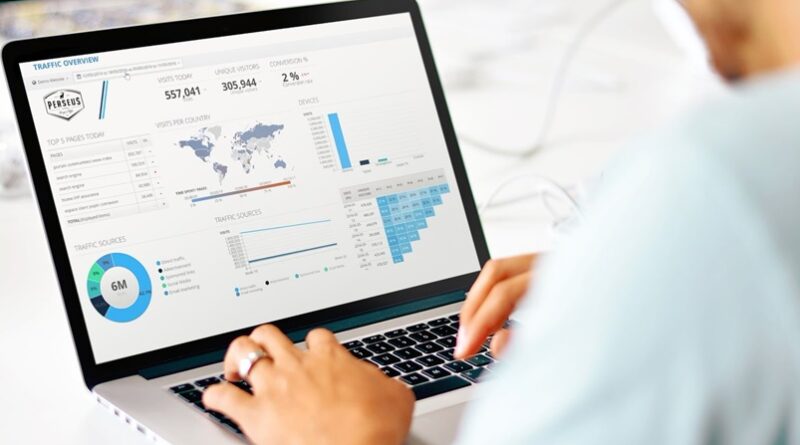Taking Your Workday Reporting to the Next Level with Prism Analytics
Workday Prism Analytics is a powerful tool that allows you to connect data from multiple sources, both within and outside of Workday. It enables you to gain deeper insights into your business, make informed decisions, and optimize your operations.
What is Workday Prism Analytics?
Workday Prism Analytics is a cloud-based data analytics platform that allows you to integrate and analyze data from a variety of sources, including Workday HCM, Workday Financial Management, and third-party systems. It provides a single, unified view of your data, enabling you to gain insights into your business and make data-driven decisions.
How Workday Prism Analytics differs from other reporting tools
Workday Prism Analytics differs from other reporting tools in several key ways. First, it allows you to combine data from multiple sources, both within and outside of Workday, providing a more comprehensive view of your business. Second, it offers a range of data visualization options, including charts, graphs, and dashboards, making it easier to understand and communicate your data. Finally, it provides self-service analytics capabilities, allowing you to create and modify reports on your own, without the need for IT support.
The benefits of using Workday Prism Analytics
A comprehensive view of your business: Workday Prism Analytics allows you to combine data from multiple sources, providing a more comprehensive view of your business.
Gain real-time insights: Workday Prism Analytics allows businesses to access real-time data from multiple sources. This means that businesses can analyze their operations as they happen and make informed decisions based on the most up-to-date information.
Improved decision-making: With Workday Prism Analytics, businesses can analyze data from different departments, enabling them to make more informed decisions. This helps organizations to identify trends, opportunities, and potential risks that could impact their business.
Increased efficiency: Workday Prism Analytics can automate data integration, cleansing, and transformation, saving businesses time and money. With automated processes, businesses can free up their IT teams to focus on other critical tasks.
Better collaboration: Workday Prism Analytics enables teams to collaborate on data analysis projects. Team members can share dashboards, reports, and data sets, making it easier to collaborate and work together.
Greater data security: Workday Prism Analytics is a cloud-based solution, which means that data is stored securely in the cloud. Workday uses advanced security measures to protect data, including encryption, role-based access control, and multi-factor authentication.
Scalability: Workday Prism Analytics can scale to meet the needs of growing businesses. As your business grows, you can add more data sources and users without worrying about the limitations of the system.
Customizable dashboards and reports: Workday Prism Analytics allows businesses to customize their dashboards and reports to meet their unique needs. This means that businesses can get the insights they need in a format that makes sense to them.
How to get started with Workday Prism Analytics
To get started with Workday Prism Analytics, you will need to follow these steps:
Step 1: Identify your business goals and data sources
Before you start using Workday Prism Analytics, you need to identify the goals you want to achieve through data analysis. This will help you determine the data sources you need to collect and integrate into Workday. Workday supports a wide range of data sources, including cloud-based and on-premises systems, spreadsheets, and databases. It is essential to ensure that the data sources you choose are accurate and reliable.
Step 2: Set up data connectors
Once you have identified the data sources you want to use, you need to set up data connectors to integrate them into Workday Prism Analytics. Workday supports several data connectors, including Workday connectors, third-party connectors, and custom connectors. You can use Workday connectors to integrate data from Workday HCM, Financials, and Planning. Third-party connectors allow you to integrate data from external systems such as Salesforce, Marketo, and Google Analytics. Custom connectors enable you to integrate data from any other data source.
Step 3: Create data sets
After setting up data connectors, you need to create data sets in Workday Prism Analytics. A data set is a collection of data from one or more sources that you want to analyze. You can create data sets using the Workday Prism Analytics user interface or by uploading a CSV file. Once you have created a data set, you can use it to create data sources, which are specific views of data that you want to analyze.
Step 4: Build visualizations
Once you have created data sources, you can use them to build visualizations. Workday Prism Analytics offers a wide range of visualization tools, including charts, graphs, and dashboards. You can use these tools to explore your data, identify trends and patterns, and gain insights into your operations.
Step 5: Share and collaborate
Finally, you can share your visualizations with other users and collaborate on data analysis. Workday Prism Analytics enables you to share visualizations with specific users or groups, set permissions for data access, and collaborate on data analysis in real-time.
Best practices for using Workday Prism Analytics
To get the most out of Workday Prism Analytics, it is important to follow these best practices:
Define your goals: Before you begin using Workday Prism Analytics, it is important to define your goals. What do you want to achieve with your data analysis? What questions do you want to answer? Defining your goals will help you focus your analysis and ensure that you are getting the most out of the platform.
Choose your data sources carefully: When choosing your data sources, it is important to consider the quality and relevance of the data. You want to ensure that you are analyzing data that is accurate and up-to-date, and that is relevant to the questions you are trying to answer.
Keep your data organized: When creating data sets, it is important to keep your data organized. This will make it easier to create reports and analyze your data. You can organize your data by creating folders and using naming conventions that make sense for your business.
Use data visualization: Workday Prism Analytics offers a range of data visualization options, including charts, graphs, and dashboards. Using data visualization can help you better understand your data and communicate your findings to others.
Collaborate with others: Workday Prism Analytics allows you to share your reports and data sets with others. Collaborating with others can help you gain new insights into your data and improve the quality of your analysis.
Stay up-to-date: Workday Prism Analytics is constantly evolving, with new features and capabilities being added regularly. It is important to stay up-to-date with these changes and take advantage of new features as they become available.
How to learn Workday Prism Analytics
Step 1: Familiarize yourself with Workday
Before you start learning Workday Prism Analytics, it is essential to have a basic understanding of Workday’s architecture and functionality. Workday is a cloud-based software-as-a-service (SaaS) solution that provides enterprise-level human resources, payroll, and financial management services. Understanding the Workday ecosystem will help you navigate Workday Prism Analytics with ease.
Step 2: Attend Workday Prism Analytics training
Workday offers a range of training options for individuals interested in learning Workday Prism Analytics. These training sessions are available in various formats, including online self-paced courses, instructor-led courses, and virtual classroom training. You can choose the format that best suits your learning style and schedule.
Step 3: Explore Workday Prism Analytics resources
Workday provides a range of resources to help individuals learn Workday Prism Analytics. These resources include training videos, knowledge base articles, user guides, and community forums. You can use these resources to explore different features of Workday Prism Analytics, learn best practices, and troubleshoot issues.
Step 4: Practice with Workday Prism Analytics sandbox
A sandbox is a simulated environment that enables you to practice using Workday Prism Analytics without affecting your production environment. Workday provides a sandbox environment where you can practice using Workday Prism Analytics and test different scenarios. You can use this environment to experiment with different data sources, create data sets, and visualize data.
Step 5: Attend Workday user groups and conferences
Attending Workday user groups and conferences can be a great way to learn Workday Prism Analytics. These events provide opportunities to connect with other Workday users, share experiences, and learn about best practices. Workday also hosts its annual Workday Rising conference, where you can attend Workday Prism Analytics sessions and hear from industry experts.
Step 6: Collaborate with colleagues
Collaborating with colleagues who are experienced in using Workday Prism Analytics can be an effective way to learn. You can seek guidance and support from experienced colleagues, ask questions, and work on projects together. Collaborating with colleagues can help you learn faster and gain practical experience.
Step 7: Stay up-to-date with Workday releases
Workday regularly releases new features and updates to its platform, including Workday Prism Analytics. Staying up-to-date with these releases can help you learn about new features and capabilities and ensure that you are using Workday Prism Analytics effectively.
Step 8: Attend Workday Prism Analytics training
Attending Workday Prism Analytics training is crucial to mastering the tool’s functionalities. Workday offers various training options, including instructor-led sessions, online self-paced courses, and virtual classroom training. These training sessions are designed to help you understand the basics of Workday Prism Analytics and gain hands-on experience working with the tool.
Attending Workday training can help you become proficient in Workday Prism Analytics faster and enable you to leverage the tool to make data-driven decisions.
Conclusion
Workday Prism Analytics is a powerful tool that can help take your reporting to the next level. By combining data from multiple sources and offering a range of data visualization options, Workday Prism Analytics provides a more comprehensive view of your business and enables you to gain deeper insights into your data. By following best practices and staying up-to-date with new features, you can get the most out of Workday Prism Analytics and make data-driven decisions that improve your business operations.



